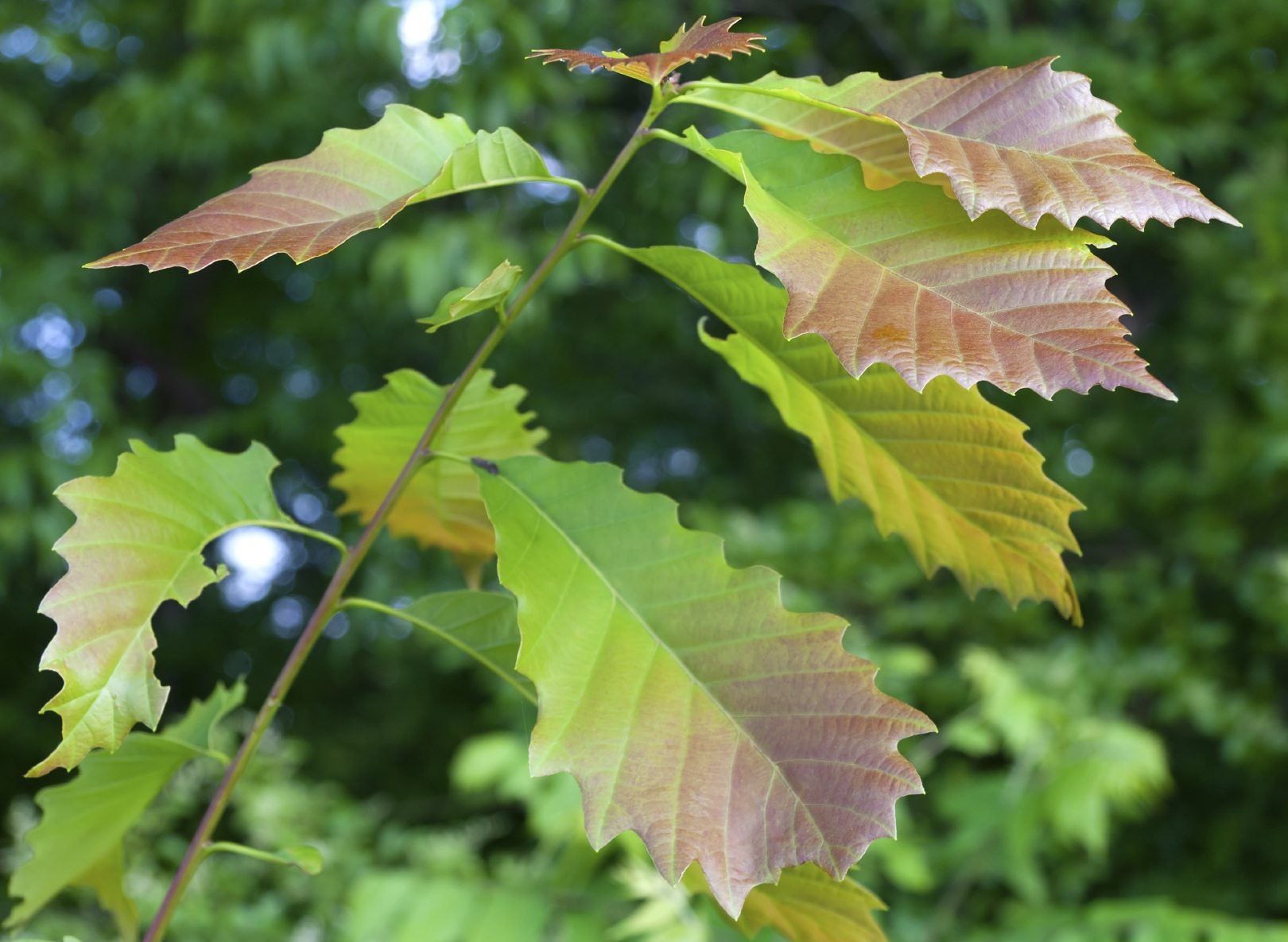Chinkapin Oak Trees – Tips On Growing A Chinkapin Oak Tree


Don’t look for the typical lobed oak leaves to identify chinkapin oak trees (Quercus muehlenbergii). These oaks grow leaves that are toothed like those of chestnut trees and are often misidentified because of this. On the other hand, some facts about chinkapin trees help you recognize them as part of the oak tree family. For example, chinkapin oak trees, like all oaks, grow clusters of buds at the end of branches. Read on for more chinkapin oak information.
Facts About Chinkapin Trees
Chinkapins are native to this country, growing naturally in the wild from New England to the Mexican border. As part of the group of white oaks, they bear very pale, white bark. Their trunks can grow to 3 feet (1 m.) in diameter.
Chinkapins are not small trees, growing to 80 feet (24 m.) in the wild and 50 feet (15 m.) tall when cultivated. The breadth of the open, rounded canopy tends to approximate the height of the tree. These oaks are planted extensively as shade trees in appropriate hardiness zones.
The leaves of the chinkapin oak tree are particularly lovely. The tops of the leaves are yellow-green, while the undersides are pale silver. The leaves flutter like those of aspens in the breeze. In the fall, the leaves turn bright yellow, contrasting beautifully with the white bark.
Chinkapin acorns appear without stalks, and they mature in just one season. They are between ½ inch and 1 inch (1-2.5 cm.) long and are edible if cooked. The wood of these oaks is hard and durable. It is known to make a fine polish and is used for furniture, fencing, and barrels.
Additional Chinkapin Oak Information
Growing a chinkapin oak tree is easier if you start the young tree in its permanent site. These oaks are difficult to transplant once established.
Plant chinkapin in a location with full sun and well-draining soil. The species prefers moist, fertile soils, but tolerates many different types of soil. It is one of the only white oak trees to accept alkaline soils without developing chlorosis.
Sign up for the Gardening Know How newsletter today and receive a free copy of our e-book "How to Grow Delicious Tomatoes".
Care for chinkapin trees is easy once they are established. Irrigate this native tree only if the weather is very hot or dry. It has no serious disease or insect problems so requires no spraying.

Teo Spengler is a master gardener and a docent at the San Francisco Botanical Garden, where she hosts public tours. She has studied horticulture and written about nature, trees, plants, and gardening for more than two decades, following a career as an attorney and legal writer. Her extended family includes some 30 houseplants and hundreds of outdoor plants, including 250 trees, which are her main passion. Spengler currently splits her life between San Francisco and the French Basque Country, though she was raised in Alaska, giving her experience of gardening in a range of climates.